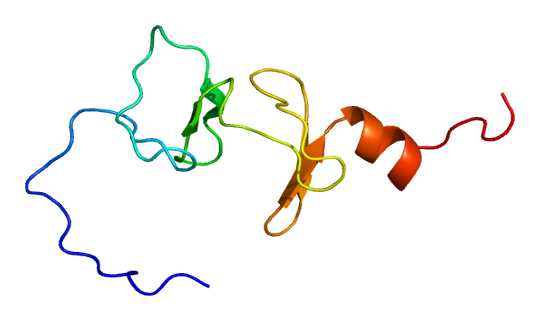Emery-Dreifuss Muscular Dystrophy 3, Autosomal Recessive

A number sign (#) is used with this entry because of evidence that autosomal recessive Emery-Dreifuss muscular dystrophy-3 (EDMD3) is caused by homozygous mutation in the LMNA gene (150330) on chromosome 1q21.
Heterozygous mutation in the LMNA gene causes EDMD2 (181350).
DescriptionEmery-Dreifuss muscular dystrophy is characterized classically by the triad of weakness of the shoulder and pelvic girdle muscles, contractures of the elbows, neck, and Achilles tendon, and cardiac involvement, most commonly arrhythmias (summary by Jimenez-Escrig et al., 2012).
For a discussion of genetic heterogeneity of EDMD, see 310300.
Clinical FeaturesRaffaele di Barletta et al. (2000) reported an unusual case of a 40-year-old man with what they termed a congenital muscular dystrophy or a severe form of atypical Emery-Dreifuss muscular dystrophy. He was born of first-cousin parents, suggesting recessive inheritance of the disorder. The patient had experienced difficulties when he started walking at age 14 months. At age 5 years, he could not stand because of contractures. At age 40 years, he presented severe and diffuse muscle wasting and was confined to a wheelchair. His intelligence was normal, and detailed cardiologic examination revealed no cardiac problems. His parents were unaffected; specialized cardiologic and muscular examinations excluded abnormalities in the parents.
Jimenez-Escrig et al. (2012) reported 4 adult sibs, born of consanguineous Spanish parents, with progressive limb-girdle muscular dystrophy with variable age at onset and variable severity. One patient had onset of gait difficulties at age 4 years, 2 had onset of gait difficulties at age 14, and the fourth presented with diplopia and dizziness at age 24. The 3 patients with onset in the first and second decades had muscle weakness and atrophy of the shoulder and pelvic girdle muscles, variable contractures of the heel cord, elbows, and neck, and progressive areflexic lower limb weakness. Two patients became wheelchair-bound at ages 25 and 35 years, respectively. The sib with later onset developed paresthesia and motor discoordination in the upper limbs, as well as later onset of weakness and atrophy of the pelvic and shoulder girdle muscles. Cardiac examination revealed that all 4 had supraventricular premature beats, with ventricular premature beats in 2 patients. Laboratory studies showed increased serum creatine kinase. Muscle biopsy showed dystrophic changes, with increased fiber size variability, increased connective tissue, and signs of necrosis and regeneration. The patients' father and paternal aunt had no muscular symptoms, but developed cardiac symptoms late in life.
Clinical Variability
Wiltshire et al. (2013) reported a Hutterite family of predominantly Leherleut ancestry in which a brother and sister developed progressive limb-girdle muscular dystrophy associated with contractures in the first or second decades. The sister was more severely affected and became wheelchair-bound by age 30. She also had severe scoliosis resulting in restrictive lung disease. Both sibs had features of partial lipodystrophy with loss of subcutaneous fat, and the sister had an aged appearance. The sister had isolated hypertension, whereas the brother had chronic atrial fibrillation. Laboratory studies showed increased creatine kinase, increased triglycerides, and increased LDL cholesterol. These 2 sibs were found to be homozygous for a missense mutation in the LMNA gene (R482Q; 150330.0010). Two other sibs and both parents were heterozygous for this mutation: these individuals had abnormal lipid profiles, but only the mother showed lipodystrophy of the extremities, a phenotype consistent with FPLD2 (151660).
InheritanceThe transmission pattern of EDMD3 in the family reported by Jimenez-Escrig et al. (2012) was consistent with autosomal recessive inheritance.
Molecular GeneticsIn a 40-year-old man with EDMD3, Raffaele di Barletta et al. (2000) identified a homozygous mutation in the LMNA gene (H222Y; 150330.0014). Both unaffected parents were heterozygous for the mutation.
In 4 sibs, born of consanguineous Spanish parents, with EDMD3, Jimenez-Escrig et al. (2012) identified a homozygous missense mutation in the LMNA gene (R225Q; 150330.0054). The mutation, which was found by whole-exome sequencing and confirmed by Sanger sequencing, segregated with the disorder and was not found in 200 control chromosomes. Functional studies of the variant were not performed. Two heterozygous carriers had no muscular symptoms, but developed cardiac arrhythmias late in life.
In 2 sibs from a family of Hutterite descent with EDMD3 and features of partial lipodystrophy, Wiltshire et al. (2013) identified a homozygous missense mutation in the LMNA gene (R482Q; 150330.0010).
Population GeneticsWiltshire et al. (2013) found the frequency of the LMNA R482Q mutation to be 1.45% in Dariusleut and Leherleut Hutterites in Alberta, Canada.